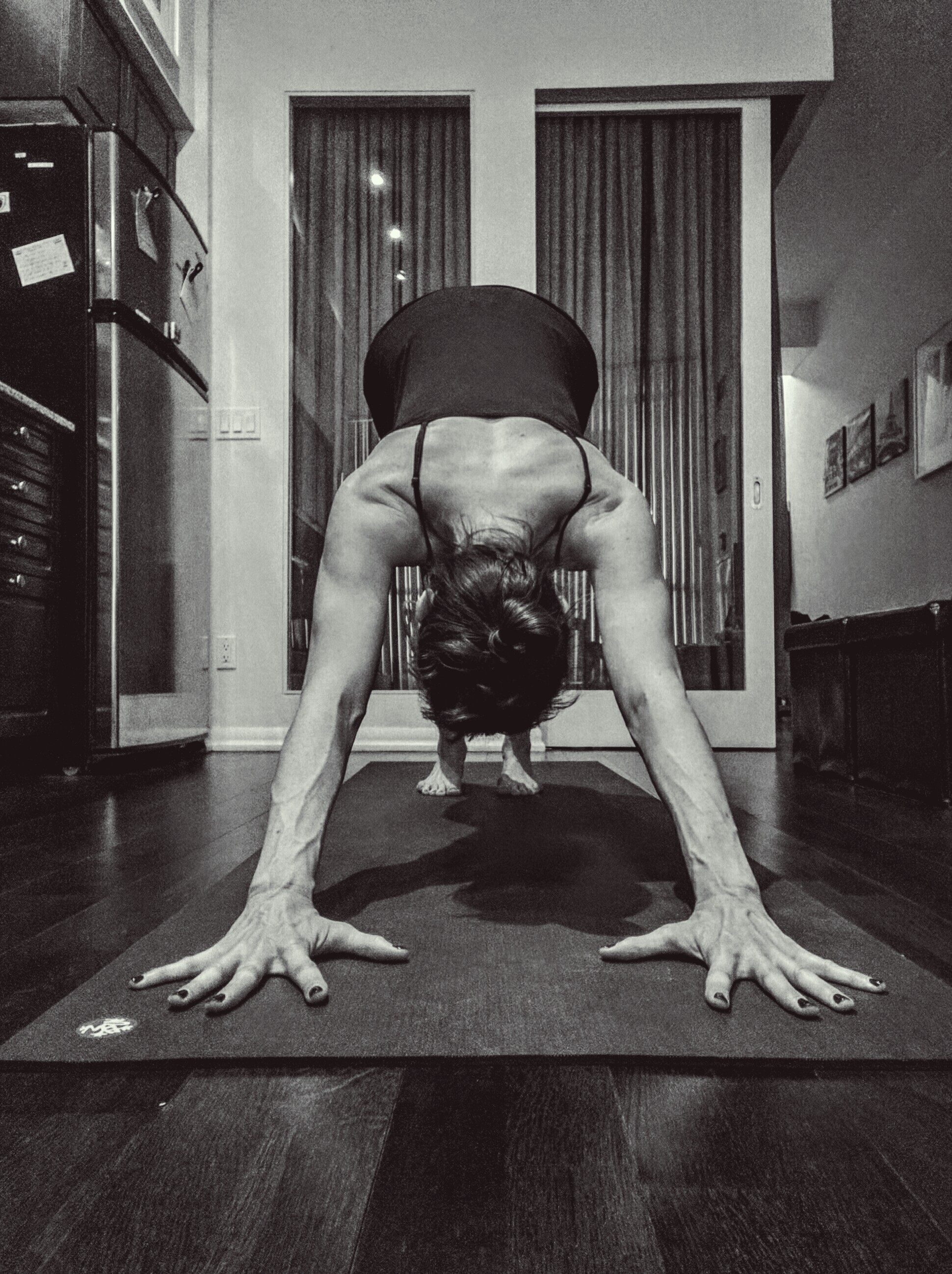
Hot Yoga. For a lot of yogis, it’s a polarizing topic.
Some people swear by it. They will only step into a yoga studio if it’s heated and ready to make attendees feel like they’re practicing in a hermetically sealed version of the amazon forest. Sweating what feels like their entire body weight in one hour. They adore the intensity and seek out that excessive, monsoon-like sweat.
Some people won’t go near it. Interestingly, the people who would rather sit through a showing of “Waterworld” than in a sea of sweat, are usually the people who have done it before. They are even sometimes the people who did it for a while, and then found they no longer wanted to….at all.
It begs the question; is hot yoga just a bunch of hot air??
I’ve questioned its validity many times myself. Based on my personal yoga practice and many conversations I’ve had with fellow yogis, students and teachers this past decade.
Between 2010 and 2012 I almost only practiced hot yoga. I was addicted to its potency. As a former collegiate athlete, I craved tough workouts. I needed to feel like I was conquering something. I had to constantly convince myself I was attempting an almost impossible feat. The class had to exhaust me so I could float home like a mushy, entirely useless mellowed out shell of a human, leaving all my woes rolled up in a sweaty yoga towel or drained out of my body onto the studio floor.
For those two years, it was exactly what I needed. It helped relieve stress after long, hard days at the office. Hot yoga was a siren’s call that lured me deeper into the world of yoga. At first, it was the physical challenge I loved. To say nothing of the pride I felt being able to say I tackled 6 hot yoga classes in a week. I adored electrolyte losing achievements.
Overtime, it was the peace and clarity of mind the practice induced at its conclusion that kept me coming back. In the end, I really was only there for the sivasana.
Eventually, I started to feel a bit too exhausted after class. Several times following a vigorous practice I would wake up feeling like I’d gone out for a night of heavy drinking and wild dancing. I’d wake up with my head throbbing and muscles aching. Even after properly hydrating before going to bed!
Thoroughly unamused by the result of a hangover without the fun that usually leads to one, I started to question if hot yoga was sustainable. Would I need to branch out and try non-heated classes?!
On top of these unfortunate results, I’d heard some less than savoury things about hot yoga. How the heat could “trick” you into thinking you were more flexible than you actually were, warming you up into a false sense of ability, and leading you to try things you maybe shouldn’t attempt. People told me the heat also fooled you into thinking you were working harder than you actually were. More sweat didn’t necessarily equate into more calories burned or greater strength attained.
I felt duped and disillusioned. I started attending non-heated vinyasa classes that could provide the physical challenge I was still hunting down at this point in my practice. After a few weeks, I experienced a marked improvement in my physical practice. Without the heat to distract me, I had a more honest gauge of my energy levels and capability. I could feel my face, control my breath and hear my thoughts. The sweat I was producing was from internal forces rather than externally applied heating panels. I had become my own furnace.
As it turned out, I was not alone. I met other practitioners who’d experienced a similar arc in their yoga practice. They started with only hot classes and, overtime, had to step away to seek out more approachable versions of the physical practice.
Even so, I saw how there were, and still are, entire franchises based solely on hot yoga. Its popularity is undeniable. Especially if you live in the northern hemisphere. Nothing beats stepping into a hot yoga studio when it’s minus 22 plus wind chill outside.
When I started teaching yoga, I taught upwards of 10 hot yoga classes a week. On top of being constantly dehydrated and over tired, my complexion was far from ‘glowing’. I realized the sweat I was producing wasn’t coming from deep inside my body. The kind of sweat that actually releases toxins and makes your skin healthier wasn’t happening. The humidity and air quality in the room would leave me feeling like the sweat that settled on my body was not my own. Ick. Stepping in puddles of human water, my internal mantra while teaching became “it’s not pee, it’s not pee”, doing my best to not slip, and having to pass on adjusting people quite a few times because, well, ew.
The high I would get from teaching was quickly being surpassed by the exhausting low I would feel after being in a 38 degree celsius room for 3 hours straight whenever I would teach back to back 75 minute hot yoga classes.
So I cut back. In my personal and teaching practice. I started to move away from hot.
It was one of the best personal and professional decisions I’ve ever made.
Even with all of this personal and community based evidence stacking against hot yoga, I still wouldn’t discount it. I think it holds a special place and purpose in the world of yoga.
For many practitioners, myself included, it is the gateway drug to the world of yoga. The western workout mindset needs challenge and vigour to get people through the door. We need to mildly beat up and subjugate ourselves in North America. Disagree? Then explain Tough Mudder, F45, Orange Theory, and of course the ubiquitous cult like world of Cross Fit.
If hot yoga can bridge the gap between physical challenge and meditative movement, I’m here for it!
I do think it’s important to head into hot yoga classes fully informed. Yes, it is vigorous and therapeutic, but don’t be fooling yourself into thinking those puddles of sweat were produced by your movements alone. I’d wager 70% of that sweat was not earned and instead induced by the infrared heating panels leaving you #blessed with burning.
It may even help induce deeper focus. I remember one of my teachers pointing out the virtue of only being able to focus on one movement at a time because of the heat. Granted, he admitted this was because you’re singularly focused on overcoming the feeling that you might die. Meditative? Debatable. But much like life, sometimes you just gotta move slowly and breathe to survive.
Should hot yoga go the way of the dodo? I don’t think so. It holds and serves a purpose. Being realistic about what it has to offer and how to keep yourself safe while practicing is important. Maybe don’t attempt the splits at the end of that 60 min hot session after you spent all day at your desk no matter how ‘bendy’ you feel. Just saying.
Whether or not it is a helpful, sustainable practice is up to you to discover. The results are often dependent on the individual. Frankly, there’s nothing wrong with throwing the occasional hot class in your workout regime as we head into the long, dark cold of a Canadian winter.
Just keep in mind, the most rewarding kind of fire is ultimately the kind you make by yourself.
(Post Script: Click HERE to read an interesting article about the history of hot yoga)
